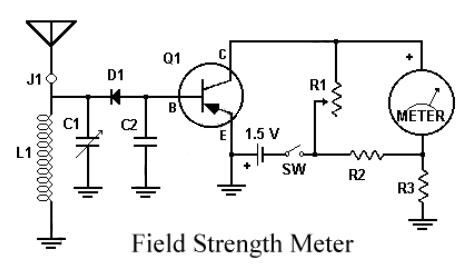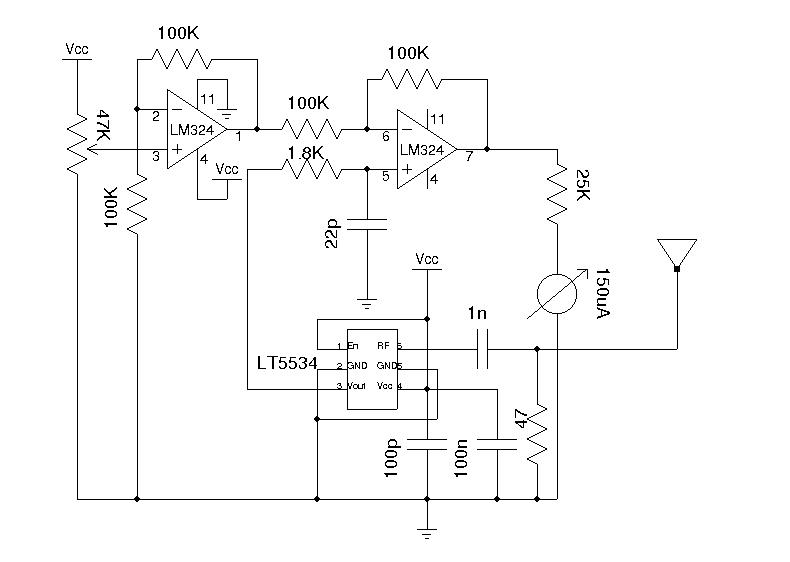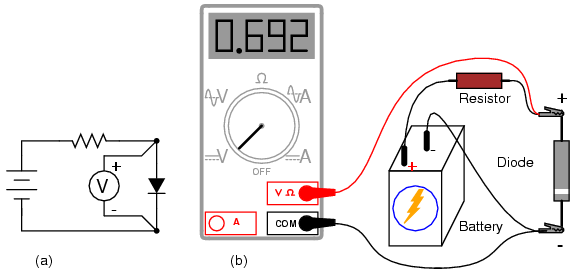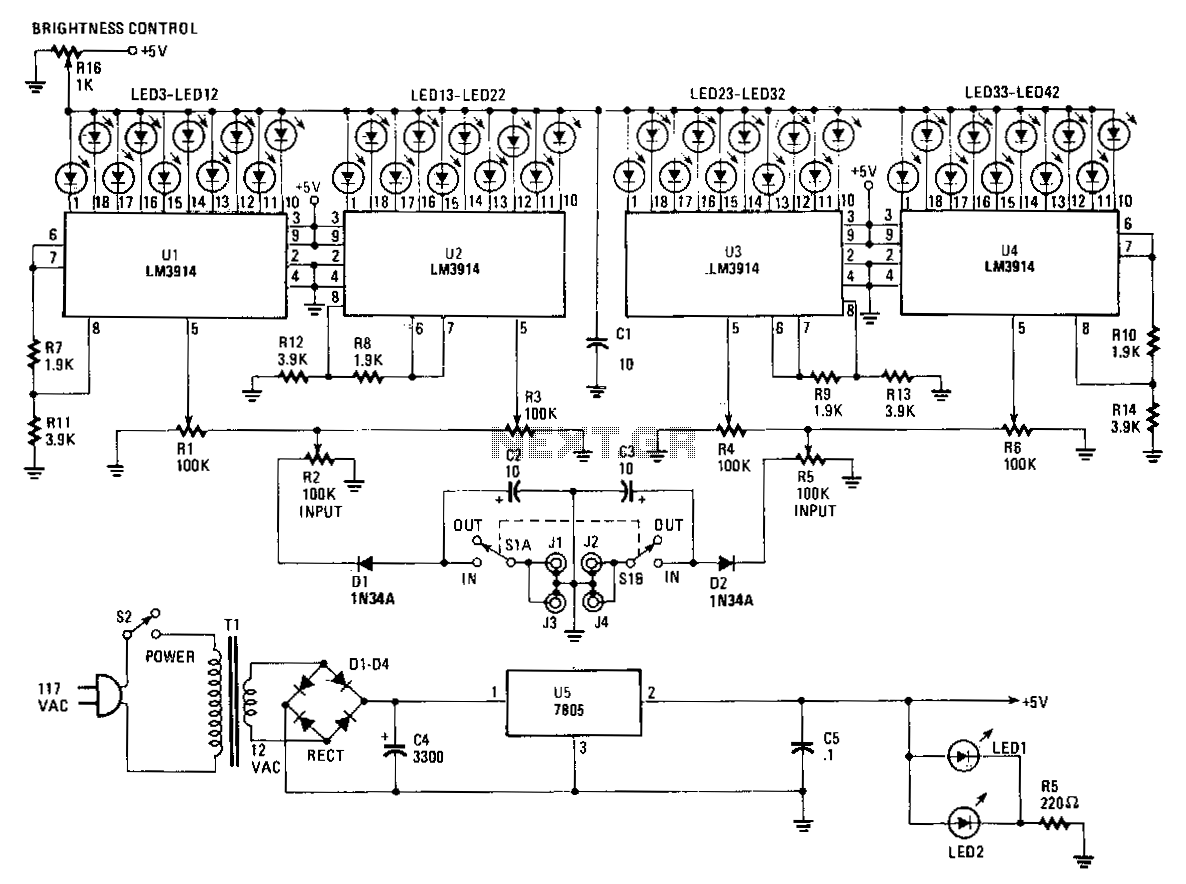
Dosage-rate meter
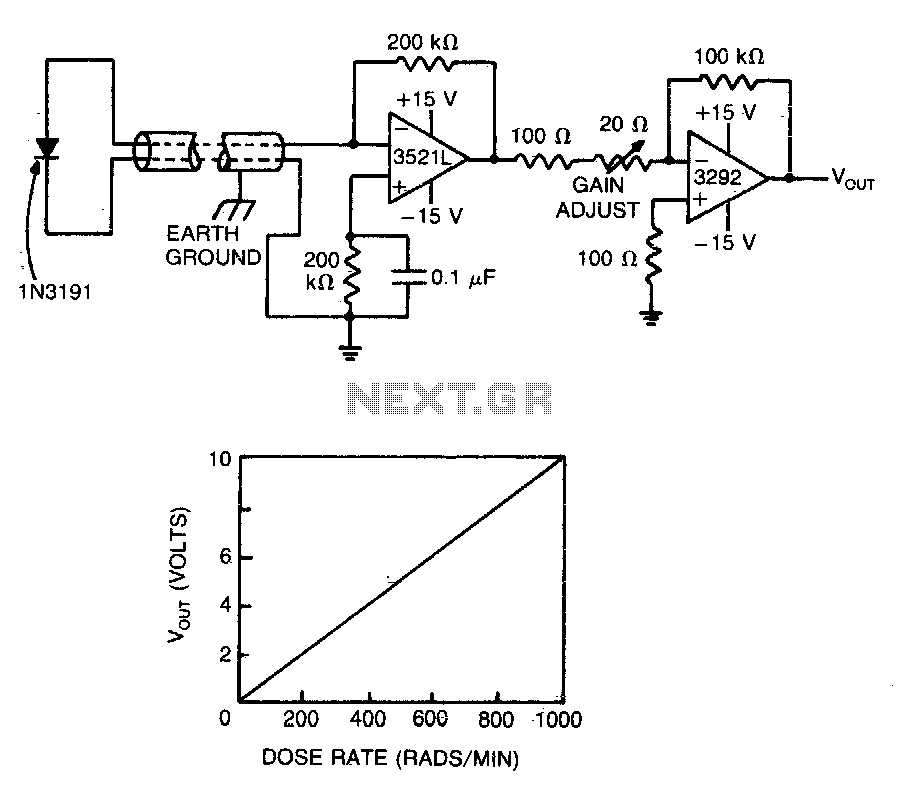
A commercial diode serves as the detector in this highly accurate radiation monitor. The low-drift FET-input operational amplifier amplifies the detector current to a usable level, while the chopper-stabilized amplifier provides additional gain, minimizing errors caused by fluctuations in ambient temperature. The gain is adjusted so that the output voltage represents 1% of the incident radiation intensity in rads per minute, allowing the voltage to be displayed on a digital voltmeter for direct reading of the dosage rate. The output voltage from the monitor is linearly proportional to the radiation intensity detected by the diode.
This radiation monitor employs a commercial diode as its primary sensing element, which is critical for detecting ionizing radiation. The diode's response to radiation generates a small current, which is then amplified by a low-drift FET-input operational amplifier. This type of amplifier is selected for its high input impedance and low noise, ensuring that the signal from the diode is accurately captured without introducing significant interference.
Following the initial amplification, a chopper-stabilized amplifier is utilized to further enhance the signal. This amplifier design is particularly effective in reducing drift and maintaining stability despite variations in temperature, which can otherwise affect the accuracy of the measurement. By employing a chopper technique, the amplifier periodically switches its input and output, effectively canceling out any low-frequency noise and drift that may arise from temperature changes.
The system is calibrated such that the output voltage is directly proportional to the radiation intensity, specifically set to represent 1% of the radiation measured in rads per minute. This linear relationship allows for straightforward interpretation of the readings. The output voltage can be easily connected to a digital voltmeter (DVM), providing a clear and direct indication of the dosage rate.
This design ensures that the radiation monitor is not only accurate but also user-friendly, as the output can be readily read without additional calculations. The linearity of the output with respect to radiation intensity simplifies the process of monitoring and allows for immediate assessment of radiation levels in various environments.A commercial diode is the detector in this highly accurate radiation monitor. The lowdrift FET-input op amp amplifies detector current to a usable level, and the chopper-stabilized amplifier then provides additional gain while minimizing any error caused by ambient-temperature fluctuations Gain is adjusted so that the output voltage is 1% of incident radiation intensity in rads per minute; therefore voltage can be displayed on digit DVM for direct reading of dosage rate. Output voltage from the monitor is linearly proportional to radiation intensity at the diode.
This radiation monitor employs a commercial diode as its primary sensing element, which is critical for detecting ionizing radiation. The diode's response to radiation generates a small current, which is then amplified by a low-drift FET-input operational amplifier. This type of amplifier is selected for its high input impedance and low noise, ensuring that the signal from the diode is accurately captured without introducing significant interference.
Following the initial amplification, a chopper-stabilized amplifier is utilized to further enhance the signal. This amplifier design is particularly effective in reducing drift and maintaining stability despite variations in temperature, which can otherwise affect the accuracy of the measurement. By employing a chopper technique, the amplifier periodically switches its input and output, effectively canceling out any low-frequency noise and drift that may arise from temperature changes.
The system is calibrated such that the output voltage is directly proportional to the radiation intensity, specifically set to represent 1% of the radiation measured in rads per minute. This linear relationship allows for straightforward interpretation of the readings. The output voltage can be easily connected to a digital voltmeter (DVM), providing a clear and direct indication of the dosage rate.
This design ensures that the radiation monitor is not only accurate but also user-friendly, as the output can be readily read without additional calculations. The linearity of the output with respect to radiation intensity simplifies the process of monitoring and allows for immediate assessment of radiation levels in various environments.A commercial diode is the detector in this highly accurate radiation monitor. The lowdrift FET-input op amp amplifies detector current to a usable level, and the chopper-stabilized amplifier then provides additional gain while minimizing any error caused by ambient-temperature fluctuations Gain is adjusted so that the output voltage is 1% of incident radiation intensity in rads per minute; therefore voltage can be displayed on digit DVM for direct reading of dosage rate. Output voltage from the monitor is linearly proportional to radiation intensity at the diode.
